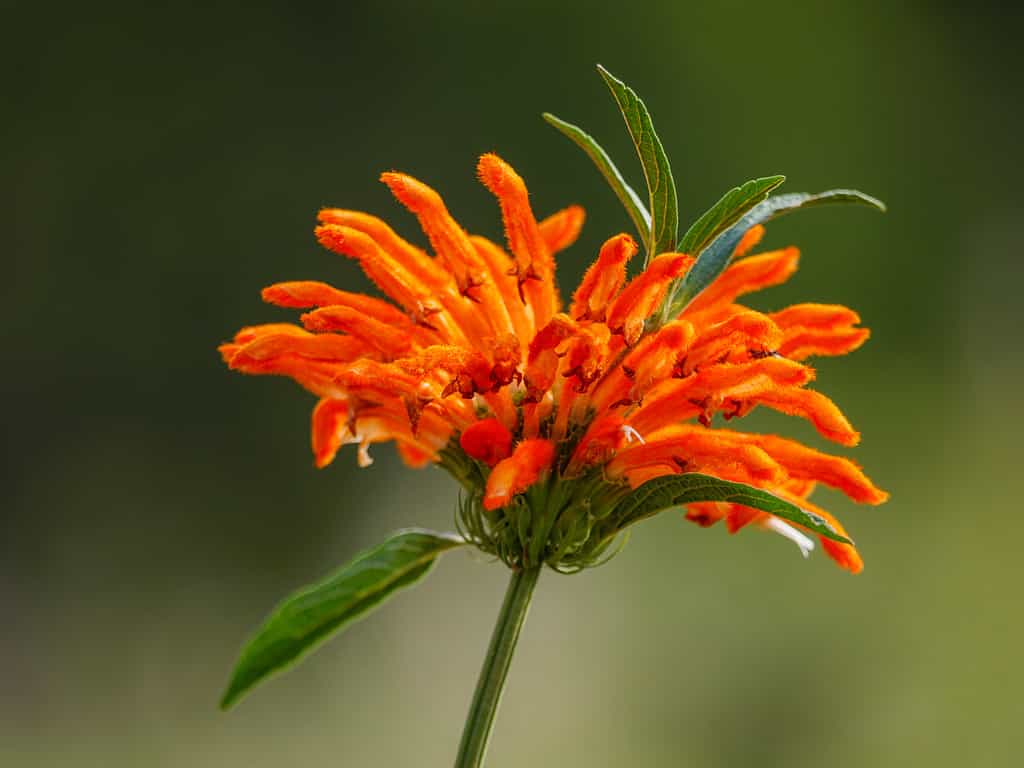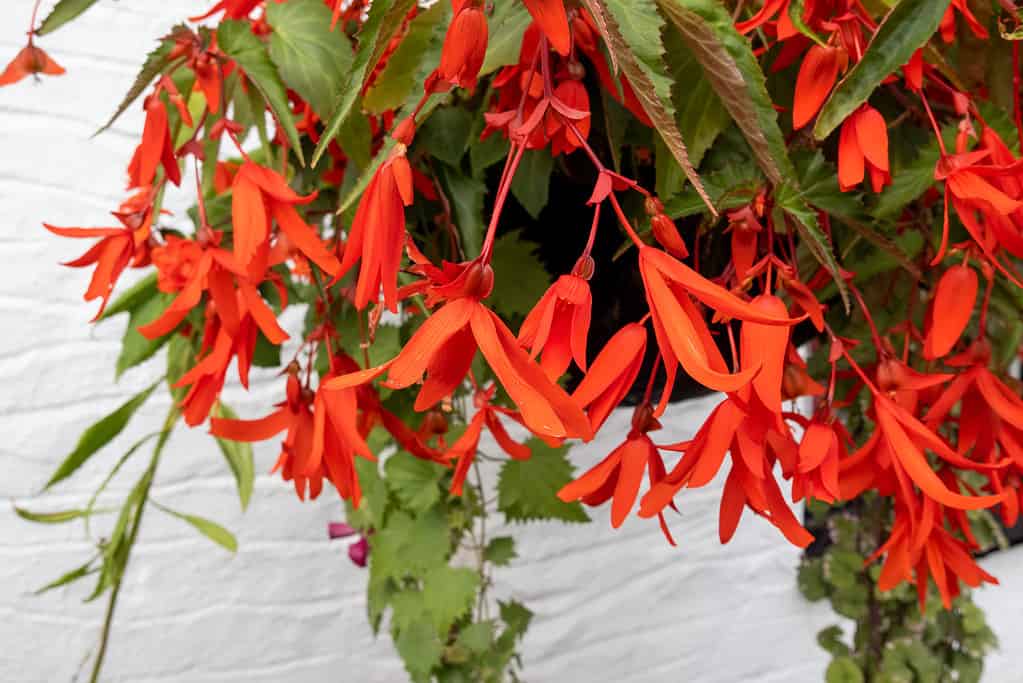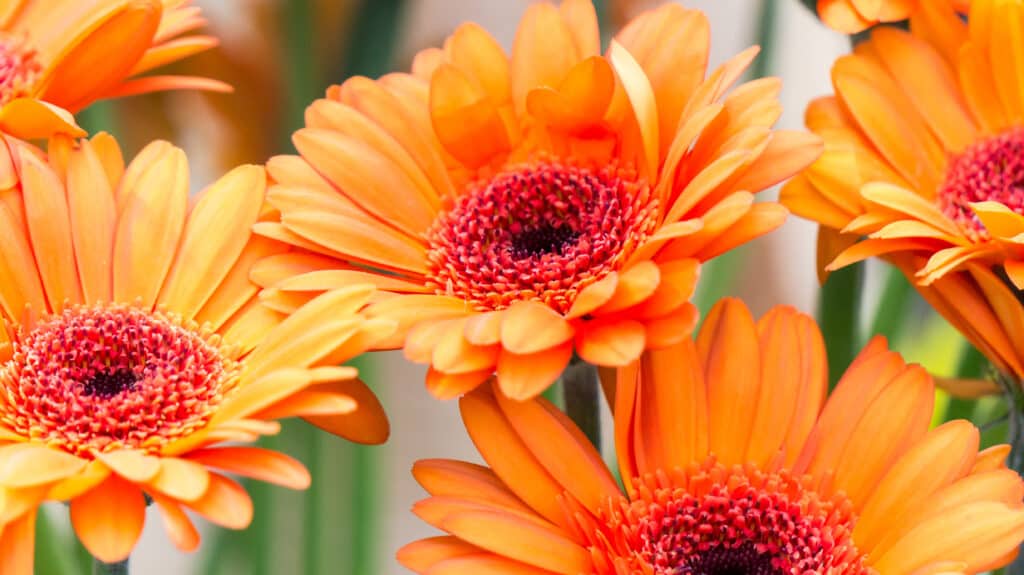There’s nothing subtle about orange flowers — they bloom loudly, calling forth attention even from across the room. Since there is nothing timid about these flowers, their symbolism is bold. They represent feelings of enthusiasm and delight. Those that bloom during spring symbolize the energy that awakens post-winter season when temperatures were more relaxed, and liveliness was lacking. Of course, the color orange has different interpretations across the globe, and even as the weather shifts just before winter, darker hues of orange become a sign that autumn has arrived.
Aside from their color, flowers hold meanings in and of themselves, with some symbolizing the same sentiment as the color orange, highlighting joy and pleasure. This flower language originated during the Victorian Era when flowers became messengers. An unchanging friendship was symbolized by arborvitae whereas a strong warning came through with a begonia. Bluebells signified humility while indifference was communicated via candytuft. Often, flowers were symbols for matters of the heart, with white carnations telling of innocent, pure love and red carnations speaking of deep, aching love.
In the list below, we highlight a variety of flowers that bloom in spring — but only those that bloom in the color orange. Some incorporate other colors like reds and yellows, with one of the bunch having more of a salmon hue. We identify their scientific names and share details specific to each of the flowers. If there is a scent, we share descriptors to help you imagine how a moment in the presence of one of these blooms would tantalize your senses.
8 Amazing Orange Spring Flowers
1. California Poppy
Scientific Name: Eschscholzia californica

The California poppy struts its orange cup-shaped colored petals that accentuate its beauty.
©Megs Lang/Shutterstock.com
California has named this beautiful orange flower its state flower. This is an herbaceous perennial from the Papaveraceae family that’s native to the western U.S. When they bloom, their colors include orange and orange/yellow combinations. Although it’s California’s state flower, other states are decorated with these blooms yearly, including Nevada, New Mexico, and the southern part of Washington state. Those driving on roads get a gorgeous view as these naturally bloom along roads, hillsides, and open environments. The mounds they bloom on grow up to 15 inches tall. These mounds have fern-like leaves throughout. The flowers themselves have four petals that are about three inches in diameter. They’re silky to the touch. Though open during the day, these flowers close during nightfall and when it’s cloudy or rainy. Depending on the environment they bloom, these flowers can have a light, sweet, and citrusy scent.
2. Painted Abutilon
Scientific Name: Abutilon pictum

Butterflies and
hummingbirds
are particularly attracted to these flowers while they’re in season, stretching into fall.
©Wirestock Creators/Shutterstock.com
This flowering plant is from the Malvaceae family and is native to several countries in South America, including Brazil and Argentina. This plant stands upright and is reminiscent of maple leaves. The flowers hang downward in a bell shape and they’re a salmon pink hue but may also be orange, red, and yellow. They kind of look like Chinese lanterns. They’re eye-catching and bloom for several months, starting in spring. Butterflies and hummingbirds are particularly attracted to these flowers while they’re in season, stretching into fall. This plant can grow tall, up to 10 feet, and needs plenty of space, as it grows out up to eight feet wide. It requires rich, moist soil that drains well, and it needs full sun (or part shade) to thrive.
3. Crown Imperial
Scientific Name: Fritillaria imperialis

The flowers face downward and on top, they have a seemingly formal headpiece made up of small, protruding leaves.
©ON-Photography Germany/Shutterstock.com
These unique flowers easily draw forth attention in gardens. They’re herbaceous perennials of the Fritillaria family. The flowers are shaped like bells and they’re an apricot-orange color. The flowers face downward and on top, they have a seemingly formal headpiece made up of small, protruding leaves. These plants grow up to 44 inches tall and their blooms last for up to three weeks from the middle of spring to the end of spring. To do well, these plants need either full sun or partial shade. The soil must drain well but it should be moist and sandy. These look best when grouped with at least six bulbs at a time. They have a musky scent and produce nectar, which reveals itself in the form of large drops.
4. Calendula (Pot Marigold)
Scientific Name: Calendula officinalis

Calendula plants are often sticky to the touch!
©Yulia_B/Shutterstock.com
This bright yellow to deep orange flower is of the Asteraceae family. It grows rather easily in moderately fertile soil alongside the full sun. So long as the soil drains well and they get partial shade when the weather gets too hot, they flower showily. The flowers are edible (add them to a salad for a burst of color), and their scent can be described as tangy and peppery with a bitter undertone. Butterflies are attracted to these flowers but so are slugs and snails, so it’s important to keep an eye on them. It’s a great addition to a vegetable garden because it attracts pollinators and it’s safe around dogs and cats. It’s often used for its decorative appearance as well, and you can usually find it infused into cosmetics and other products.
5. Orange Carnation
Scientific Name: Dianthus caryophyllus

These flowers are edible and have a clove-like smell with both sweet and spicy notes.
©yoshi0511/Shutterstock.com
These perennial blooms are from the Caryophyllaceae family and start to bloom in the later part of spring through the middle of summer. Often, these flowers are pink, but this orange variation makes for a wonderful assortment that you can preserve well. They do well in full sun but can handle partial shade as well. They grow to about 24 inches and require well-drained soil to blossom. Although they do well with full sun, they grow better in cooler climates. They don’t tolerate high temperatures. Aside from pink and purple flowers, there are also white, red, and yellow varieties you can pair with the orange carnations. These flowers are edible and have a clove-like smell with both sweet and spicy notes.
6. Lion’s Tail
Scientific Name: Leonotis leonurus

These flowers are fuzzy with two tubular lips that grow about two inches long.
©Roger de la Harpe/Shutterstock.com
Lion’s tail is from the Lamiaceae family and is a shrub that stands up straight with stunning orange flowers. The name is apt because of the flower’s shape, which is evocative of a wild lion’s tail. These flowers are fuzzy with two tubular lips that grow about two inches long. The leaves are dark green and grow about six inches long. If bruised, it’s quite aromatic. These flowers thrive in mild climates where temperatures cool, able to survive temperature drops down to 20 degrees Fahrenheit. These plants grow up to six feet tall and require full sun or partial shade. It’s not particular about the soil it flourishes in, so long as it drains well and retains medium moisture levels. Birds, hummingbirds, and butterflies all flock to this flashy plant; it also adds a distinctive appearance to bouquets.
7. Orange Glow Begonia

These flowers bloom throughout spring and summer, adding vivid splashes of color to your collection of house plants.
©Philip Bird LRPS CPAGB/Shutterstock.com
Scientific Name: Begonia boliviensis
This gorgeous plant has flaming reddish-orange blooms beautifully dispersed among its rich green leaves. It’s part of the Begoniaceae family and is also known as the “Santa Cruz” flower. These flowers bloom throughout spring and summer, adding vivid splashes of color to your collection of house plants. It needs average watering along with nitrogenous feeds but it’s not a fastidious plant so long as the temperature remains moderate. It thrives in full shade, but sunlight and partial shade are better if you prefer to grow larger flowers. They have a cascading appearance, brightening up any space with a touch of elegance. Keep in mind, however, this plant is toxic to cats, dogs, and horses.
8. Gerbera Daisy

Along with orange and yellow flowers, you can find more daisy-like flowers in white, pink, and purple.
©Andrey Shepetov/Shutterstock.com
Scientific Name: Garvinea orangina
Gerbera daisies are bicolored with orange centers and yellow edges. Their leaves are dark green, beautifully contrasting the bright, erect flowers. These flowers from the Asteraceae family require sunny conditions with normal watering. They start flowering in the spring and keep their bloom until fall rolls around. Their stems are hairy and stand tall, placing the flowers themselves on a pedestal of sorts to be admired. Along with orange and yellow flowers, you can find more daisy-like flowers in white, pink, and purple. Although a feast for the eyes, these flowers do not have a scent.
The photo featured at the top of this post is © iStock.com/HansJoachim
Thank you for reading! Have some feedback for us? Contact the AZ Animals editorial team.






